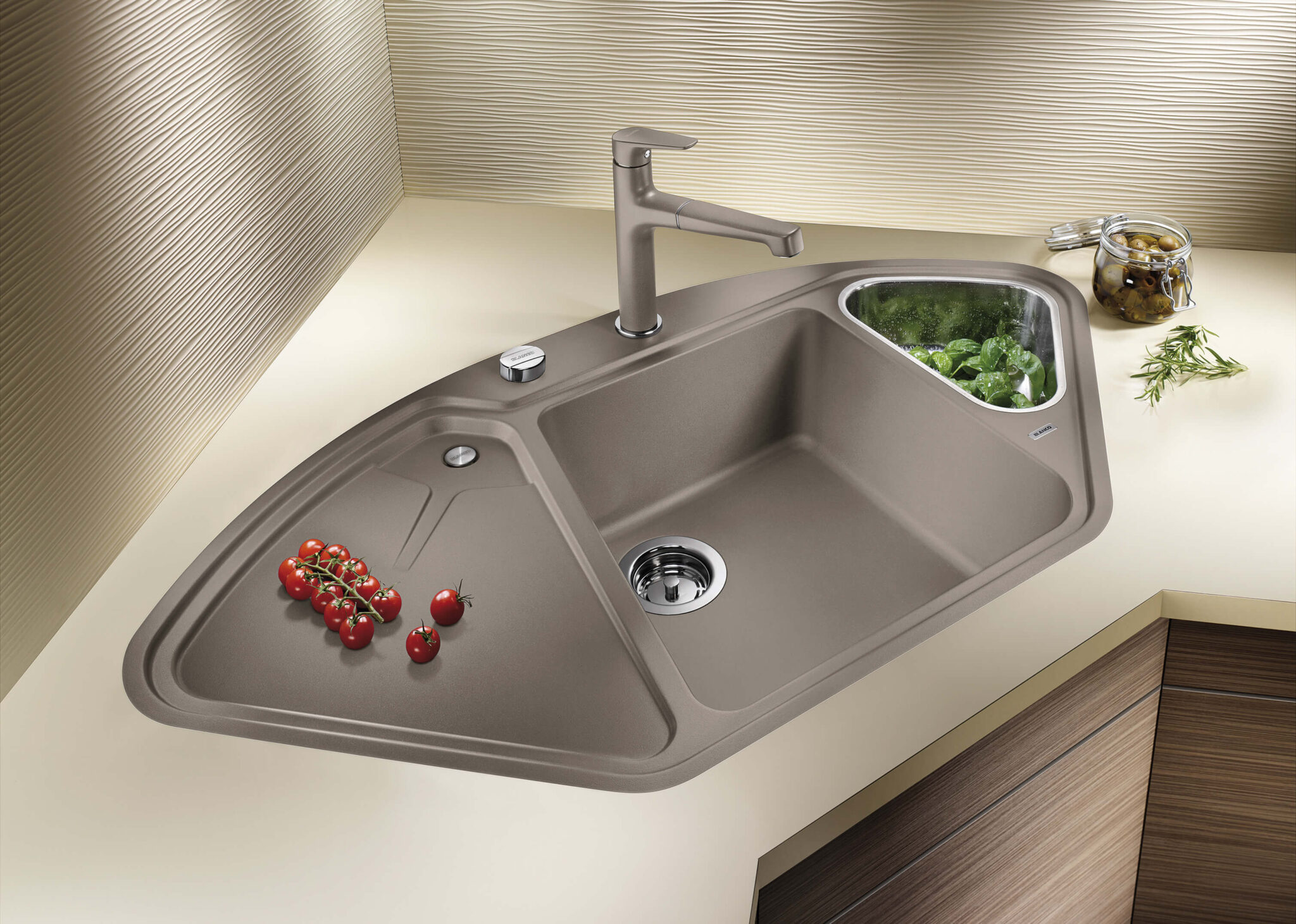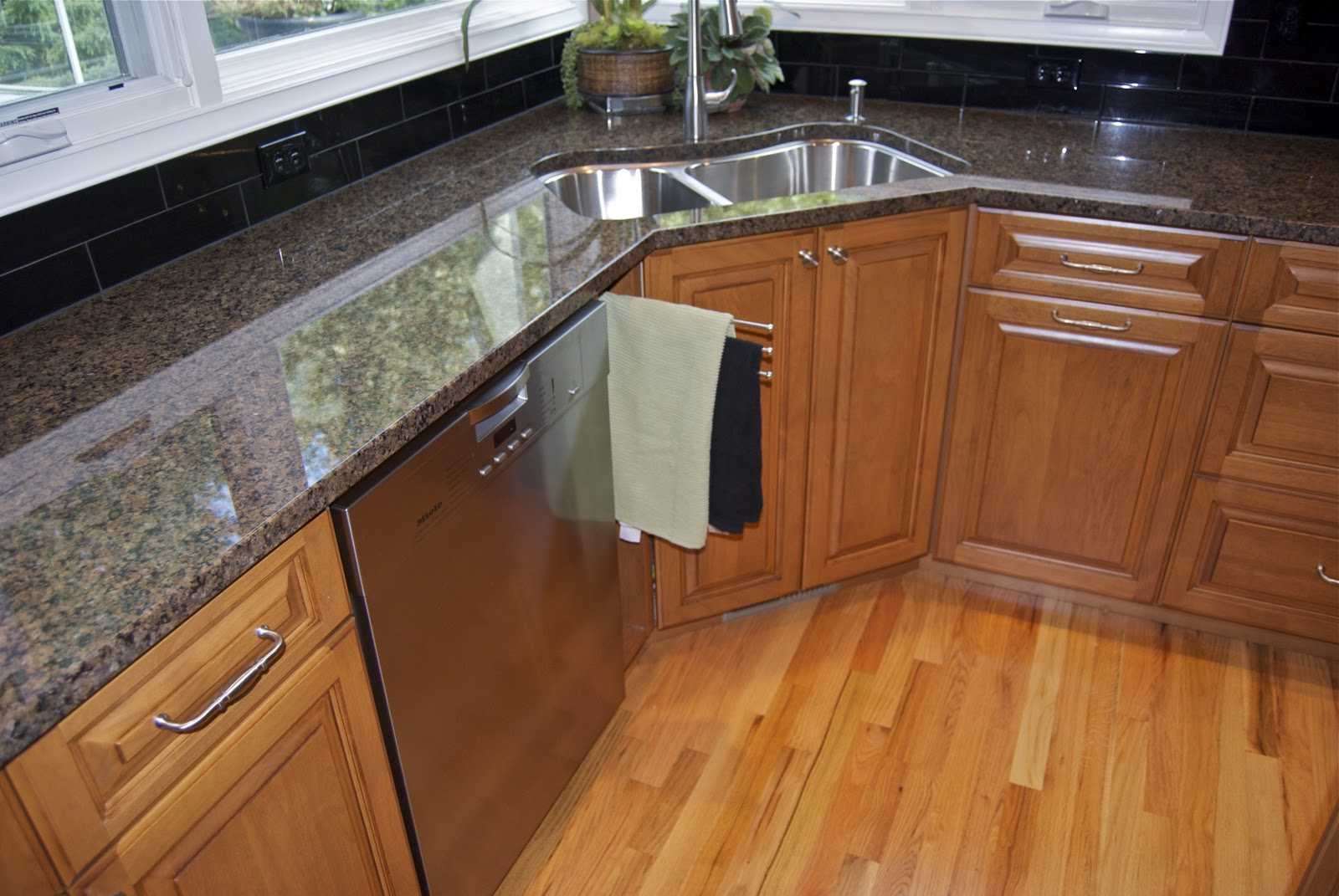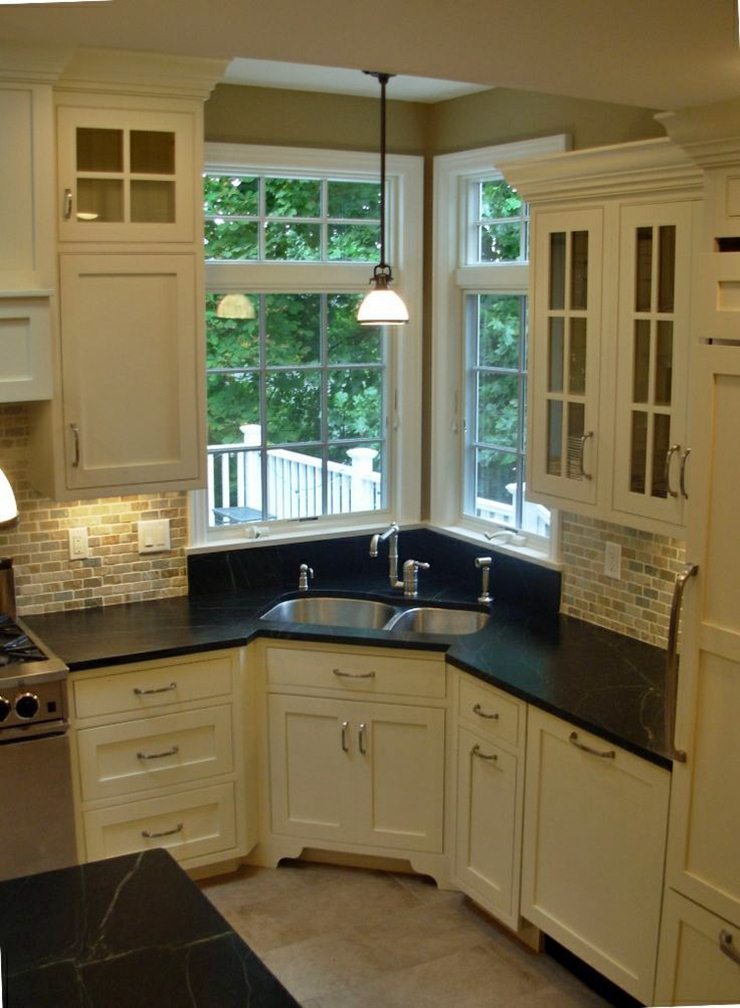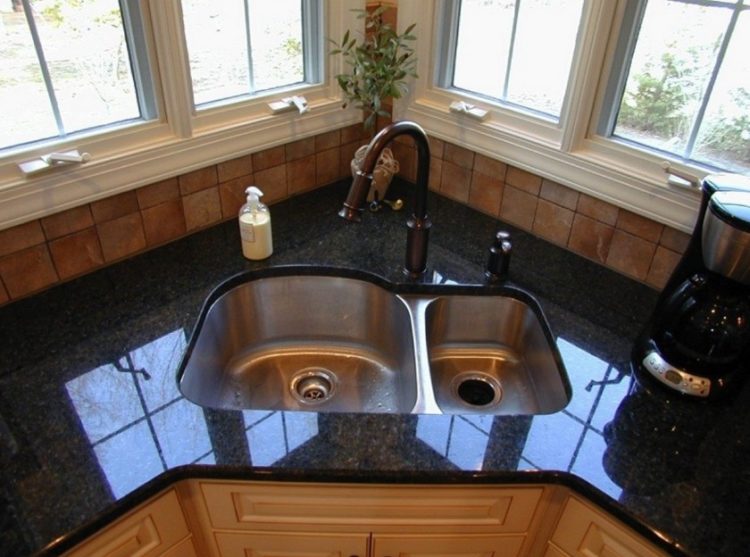Corner Kitchen Sinks: What to Know Before You Buy
When it comes to kitchen design, every inch of space counts. That's why more and more homeowners are turning to corner kitchen sinks as a solution to maximize their kitchen's functionality. But before you make the decision to install a corner kitchen sink, there are a few things you should know.
First and foremost, consider the size and layout of your kitchen. While corner kitchen sinks can be a great space-saving option, they may not be the best choice for every kitchen. If your kitchen is on the smaller side, a corner sink may take up too much space and make it difficult to move around. On the other hand, if you have a larger kitchen, a corner sink can help fill in awkward corners and create a more efficient workspace.
Another important factor to consider is plumbing. Installing a corner kitchen sink can be more complex and may require additional plumbing work. Make sure to consult with a professional plumber before making any decisions.
How to Choose the Right Corner Kitchen Sink
When it comes to choosing the right corner kitchen sink, there are a few key factors to keep in mind.
First, consider the material. Stainless steel and porcelain are popular options because of their durability and easy maintenance. However, if you're going for a more modern or unique look, you may want to consider a sink made from materials like copper or granite.
Next, think about the shape and size of the sink. Corner kitchen sinks come in a variety of shapes, including round, square, and rectangular. Consider the size and shape of your kitchen and how the sink will fit into the space.
Lastly, consider the depth of the sink. A deeper sink can be more practical for washing larger pots and pans, but it may also take up more space. Think about your cooking and cleaning habits to determine the best depth for your corner kitchen sink.
Maximizing Space with a Corner Kitchen Sink
One of the main reasons homeowners opt for a corner kitchen sink is to maximize space in their kitchen. With traditional sinks, corners tend to be underutilized and can become dead space. A corner sink helps to fill that space and can create a more efficient and functional kitchen layout.
Additionally, corner kitchen sinks can also create more counter space, which is always a plus in any kitchen. You can use the area around the sink for food prep or even add a small dishwasher or trash compactor to further optimize the space.
Corner Kitchen Sink Ideas for Your Home
There are endless possibilities when it comes to incorporating a corner kitchen sink into your home's design. Here are a few ideas to get your creative juices flowing:
1. Dual Sinks: Consider installing two smaller corner sinks instead of one large one. This can be a great option for households with multiple cooks or for those who need a separate area for food prep and clean-up.
2. Undermount Sink: An undermount sink is installed beneath the countertop, creating a sleek and seamless look. This can be a great option for modern or minimalist kitchens.
3. Farmhouse Sink: For a more traditional or rustic look, consider a farmhouse-style corner sink. These sinks typically have a large, deep basin and add a charming touch to any kitchen.
4. Corner Bar Sink: If you have a bar area in your kitchen, a corner bar sink can be a great addition. This allows you to have a designated sink for washing glasses and mixing drinks, keeping your main sink free for other tasks.
Installing a Corner Kitchen Sink: Step-by-Step Guide
Installing a corner kitchen sink can be a bit more complicated than a traditional sink, but with the right tools and knowledge, it can be a DIY project. Here's a general step-by-step guide to installing a corner kitchen sink:
Step 1: Measure and Cut Countertop: Measure the dimensions of the sink and mark the area on the countertop. Use a jigsaw to cut out the countertop, following the marked lines.
Step 2: Install Sink Support: Use a stud finder to locate the wall studs behind where the sink will be installed. Install a sink support bracket on each stud using screws.
Step 3: Install Sink: Apply a thin bead of silicone caulk around the top edge of the sink. Carefully lower the sink into the hole in the countertop and press down firmly to secure it.
Step 4: Connect Plumbing: Connect the water supply lines and drain to the sink following the manufacturer's instructions.
Step 5: Seal and Finish: Use silicone caulk to seal around the edges of the sink and countertop to prevent any water from seeping in. Let the caulk dry completely before using the sink.
Benefits of a Corner Kitchen Sink
Aside from maximizing space, there are several other benefits to choosing a corner kitchen sink for your home:
1. Increased Counter Space: As mentioned earlier, a corner sink can create more counter space, giving you more room to work and prep meals.
2. Additional Storage: Installing a corner sink can also create opportunities for additional storage space. You can add cabinets or shelves in the corners next to the sink, making use of previously unused space.
3. Improved Traffic Flow: With a traditional sink, there can often be a bottleneck effect when multiple people are trying to use the sink at once. A corner sink can help improve traffic flow in the kitchen, allowing for smoother movement and less congestion.
Corner Kitchen Sink Designs for Small Kitchens
If you have a small kitchen, you may be hesitant to install a corner sink. However, with the right design and layout, a corner kitchen sink can actually make your small kitchen feel more spacious. Here are a few design ideas to consider:
1. Compact Sink: Choose a smaller, compact corner sink to maximize counter space. You can also opt for a sink with a smaller basin to create more room for food prep.
2. Floating Shelves: Instead of traditional cabinets, consider installing floating shelves above and next to the sink. This can create a more open and airy feel in the kitchen.
3. Light Colors: Lighter colors tend to make a space feel larger, so consider using light-colored countertops and backsplash around your corner sink.
Corner Kitchen Sink Cabinet Options
When it comes to cabinets for a corner kitchen sink, there are a few options to consider:
1. Diagonal Cabinets: Diagonal cabinets are specifically designed to fit in the corner of a kitchen, making them a perfect option for a corner sink. These cabinets have a door that opens on a diagonal, allowing for easy access to the sink.
2. Blind Corner Cabinets: Blind corner cabinets have a single door that opens to reveal a storage area in the corner. This type of cabinet can be a more budget-friendly option, but it may be more difficult to access items in the back of the cabinet.
3. Custom Cabinets: If you have the budget for it, consider investing in custom cabinets. This will allow you to design cabinets specifically for your corner sink, maximizing storage and functionality.
Corner Kitchen Sink Placement: Tips and Tricks
When it comes to placing your corner kitchen sink, there are a few tips and tricks to keep in mind:
1. Consider Your Workflow: Think about how you use your kitchen and place the sink in a spot that makes sense for your workflow. For example, if you do a lot of food prep, you may want the sink closer to your cutting and chopping area.
2. Leave Room for Drying: Make sure to leave enough space next to the sink for a drying rack or mat. This will make it easier to wash and dry dishes without taking up valuable counter space.
3. Use Corner Space: Don't forget about the space around the sink. You can use the corners to install hooks for hanging dish towels or to store frequently used utensils or cleaning supplies.
Corner Kitchen Sink Pros and Cons
As with any design decision, there are pros and cons to installing a corner kitchen sink. Here is a quick breakdown:
Pros:
The Importance of Strategic Placement in Kitchen Design

Maximizing Space and Functionality
 When it comes to designing a kitchen, every inch of space counts.
Kitchen sink close to corner
is a common dilemma for homeowners, as it can create an awkward and cramped work area. However, with strategic placement and thoughtful design, this issue can easily be resolved.
One of the main benefits of having a kitchen sink close to the corner is maximizing functionality. Placing the sink in a corner can create a more efficient workspace, allowing for easy access to both the sink and surrounding countertop space. This is especially beneficial for smaller kitchens, where every inch of counter space is valuable for food preparation and cooking.
When it comes to designing a kitchen, every inch of space counts.
Kitchen sink close to corner
is a common dilemma for homeowners, as it can create an awkward and cramped work area. However, with strategic placement and thoughtful design, this issue can easily be resolved.
One of the main benefits of having a kitchen sink close to the corner is maximizing functionality. Placing the sink in a corner can create a more efficient workspace, allowing for easy access to both the sink and surrounding countertop space. This is especially beneficial for smaller kitchens, where every inch of counter space is valuable for food preparation and cooking.
Creating a Flowing Layout
 Another advantage of a corner sink is its ability to create a seamless and flowing layout in the kitchen. By placing the sink in the corner, it allows for a natural progression from the sink to the cooking area, making it easier to move around and work efficiently in the space. This also creates a cleaner and more organized look, as there are no obstacles or bulky appliances in the middle of the kitchen.
Another advantage of a corner sink is its ability to create a seamless and flowing layout in the kitchen. By placing the sink in the corner, it allows for a natural progression from the sink to the cooking area, making it easier to move around and work efficiently in the space. This also creates a cleaner and more organized look, as there are no obstacles or bulky appliances in the middle of the kitchen.
Utilizing Dead Space
 Having a kitchen sink close to the corner also helps to utilize dead space in the kitchen. Often, corners in a kitchen are left unused or awkwardly filled with storage solutions that are difficult to access. By placing the sink in the corner, it transforms this dead space into a functional and practical area that can be utilized for daily tasks.
Having a kitchen sink close to the corner also helps to utilize dead space in the kitchen. Often, corners in a kitchen are left unused or awkwardly filled with storage solutions that are difficult to access. By placing the sink in the corner, it transforms this dead space into a functional and practical area that can be utilized for daily tasks.
Final Thoughts
 In conclusion, while the idea of a
kitchen sink close to the corner
may seem daunting at first, it can actually be a clever and strategic design choice. Not only does it maximize space and functionality, but it also creates a seamless and efficient layout in the kitchen. So when it comes to designing your dream kitchen, don't overlook the potential of placing the sink in the corner. With the right design and placement, it can elevate the overall functionality and aesthetic of your space.
In conclusion, while the idea of a
kitchen sink close to the corner
may seem daunting at first, it can actually be a clever and strategic design choice. Not only does it maximize space and functionality, but it also creates a seamless and efficient layout in the kitchen. So when it comes to designing your dream kitchen, don't overlook the potential of placing the sink in the corner. With the right design and placement, it can elevate the overall functionality and aesthetic of your space.












































:no_upscale()/cdn.vox-cdn.com/uploads/chorus_asset/file/19495086/drain_0.jpg)
























:max_bytes(150000):strip_icc()/CornerKitchenSink-5a79dc0d8e1b6e00373b9cf2.jpg)












